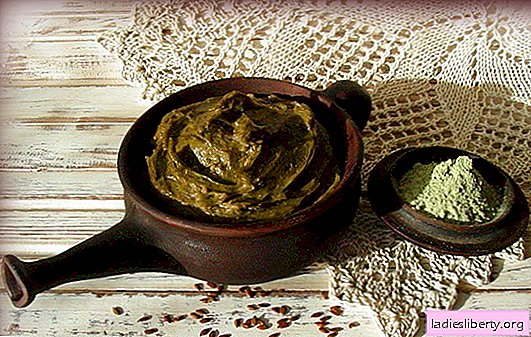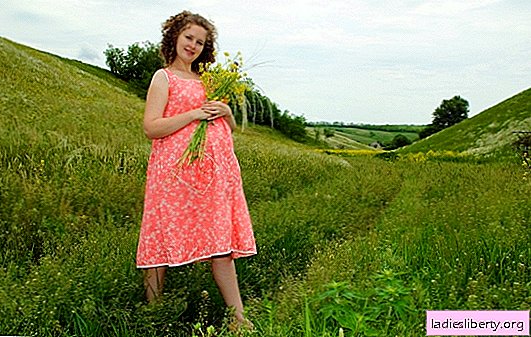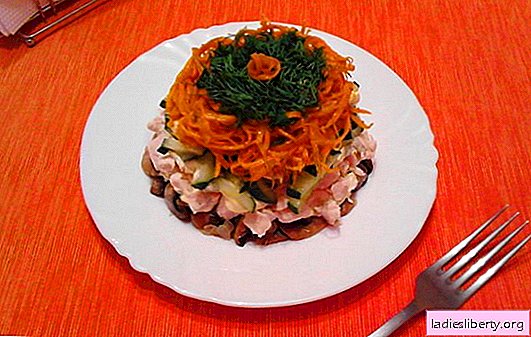
It has long been known that the chemicals in hair dye greatly spoil them. Hair becomes thinner and more porous with each subsequent coloring.
You can continue to “kill” your hair with dyes, and you can use natural dye henna - and the benefits for the hair are invaluable, and the color will be persistent and saturated.
Henna spreads useful properties not only to hair - it is used to make medical masks for the scalp and face, as well as a pigment for temporary tattoos. Proven for centuries, henna is still one of the most popular cosmetics, not inferior to modern developments.
Henna: composition as used
If we talk about useful henna for coloring hair and tattoos in different shades of red, then under the name "henna" you need to understand dried leaves of lavsonia beardless (Lawsonia inermis), crushed to the maximum state. To the touch, henna powder for coloring and healing resembles flour.
Population Iran, India, Egypt, Sudan and other countries North africa and Middle east, in which the lavsonium shrub grows, has long been using the benefits of henna not only as a dye, but also for the treatment and prevention of various diseases.
Colorless and black powder is also called henna. In fact, "neutral" and "black henna" have nothing to do with henna. Colorless henna is a Siberian cassia plant without coloring pigment, and black henna is an indigo plant. All these are natural plant components that really benefit the body.
Henna comes to our market as an Iranian or Indian product..
If you buy a bag of henna, which indicates that it will lighten your hair or dye it brown or black, then be sure: the powder contains not only henna or natural ingredients. The henna plant, losonia, contains a single dye molecule, and it is red-orange. All other colors are obtained thanks to reagents added to the composition.
Most often, to obtain a color other than red shades, metal salts (silver, nickel, copper, bismuth, cobalt, and iron salts), lead acetate (oxide) and para-phenylenediamine, which severely damage the hair, are added. Dye with lead acetate gradually accumulates harmful substances on the hair shaft.
Henna: what's the use
Henna with a red coloring pigment, lavsonia, contains tannins. Thanks to them accelerates Hair Growth, the hair bulb is strengthened, and the hair itself gain shine and vitality.
Dull, brittle and split ends are transformed after using henna, become shiny, soft and supple, and cease to curl strongly.
In the skin cells, henna binds collagen, which prevents the skin from drying out. Henna protects the skin from fungus, boils, seborrhea and even herpes. Regular use of henna completely eliminates dandruff.
Scientists have proven that henna is useful for stimulating hair growth. In addition, it acts as a hair conditioner much better than the products of well-known companies - the hair becomes bulkier and thicker.
As for colorless henna, it is useful both for restoration and strengthening of hair, and for skin problems:
• acne;
• fungi;
• bacterial damage;
• inflammation.
Also neutral henna can lighten skin a little, it "bribes" women with freckled skin. In this case, tincture of boric acid is added. At the same time, the face ceases to shine, becomes dull.
For headache relief make lotions from a mixture of vinegar with henna.
Beauticians claim that neutral henna is beneficial for skin rejuvenation, and use it in the form of masks.
For problem skin of adolescents, with inflammation and clogged pores, it is necessary to normalize the production of sebum. For this tea tree oil is added to the finished mass with colorless henna and applied in the form of a mask until completely dry. Despite the drying effect, henna leaves a protective layer on the skin that prevents it from external exposure to the sun, frost, chlorinated and salt water.
Useful foreign powder from hot countries will help relieve pain in eczema, burns and sprains, as well as soothe exacerbation of arthritis and rheumatism.
Before applying the mask to the face, it must be cleaned and treated with lotion.
The advantage of henna over hair dye
The main use of henna for hair is its naturalness. Powder hypoallergenicwill not cause itching and skin irritation. Hair coloring can be done indoors, additional ventilation is not required, since henna does not provoke harmful chemical fumes.
Henna can be dyed without harm to the hair every two weeks - and the scalp and the hair itself will become healthier, and the hair will harden and become color and shine. In addition, regular staining with henna is useful for combating dandruff.
Frequent washing of the hair, blow-drying and sunlight - all this leads to a quick rinse and fading of the color when stained with chemical dyes contained in the hair dye. Henna is not afraid of all these circumstances - color remains constant, does not fade in the sun, henna even protects hair from ultraviolet radiation.
Henna stands out for its low price with high efficiency, and savings on hairdresser services. After spending some time at home, you will get an excellent result from staining with henna.
Cooking masks from henna choose dishes made of glass, plastic, ceramic or metal, but coated with enamel. Do not use metal utensils.
The color lasts on the hair for about four months, and disappears gradually. After dyeing your hair with henna, you will not be left with regrown roots and hair of an incomprehensible color - the transition will be smooth, and after six months there will be no trace of henna.
Henna: what's the harm
Before deciding on a stain, treatment or recovery, they are usually interested in whether henna will cause harm. If we talk about the reaction of the human body, then from a physiological point of view, henna will not cause harm to hair or health. If we are talking about the aesthetic component, then henna will only harm if used improperly or when using poor-quality raw materials.
1. Previously dyed hair after exposure to henna can become an unpredictable color. The same effect will be if you try to dye over the henna with a mixture of artificial dyes - your hair can even turn green. To correct this shortcoming, you will have to go to the hairdresser, since at home correction will not succeed.
2. Unfortunately, henna does not affect gray hair as I would like. After staining the hair, the hair will turn bright red or copper. A chestnut hue cannot be achieved.
3. Dyeing hair with henna after perming, you will completely straighten your hair. It nullifies the whole effect of curling.
4. It is better for owners of dry hair not to get carried away with henna staining - it can really do harm to them. Ladies with dry hair can use henna no more than once every two months. Apply colorless henna with an interval of 2-3 weeks.
5. The smell of henna attracts cats and spiders, interest can cause in young children. To avoid confusion, do not leave a container of henna unattended.
6. Categorically it is impossible to mix natural henna with artificial dyes - the result is unpredictable, hair can be completely destroyed.
7. For the correct preparation of the mixture, pour henna powder in a non-metallic dish with hot (up to 70 degrees Celsius) water. Do not pour henna with boiling water!
8. In order not to get into trouble with the color of dyed hair, always try to dye a small strand first in an inconspicuous place behind the head and time the time. If the result is expected, then you can repeat the procedure for all hair.
9. The packaging on which "henna" is written, and any shade other than reddish is indicated, indicates the presence of impurities in the composition. This "henna" causes harm to the hair - the hair can become lifeless, and an allergic rash often appears on the skin after using such drugs.
10. Henna strongly colors skin, apply the coloring matter in cellophane or rubber gloves, and lubricate the skin with vegetable oil or greasy cream along the hairline.
Of course, staining with henna is laborious and dirty, but the result from it is excellent.
For pregnant and lactating mothers: henna does no harm?
Doctors forbid pregnant women to dye their hair with ready-made shop paints at an early date due to the increased risk of allergies and toxic substances, the effects of which on the fetus are not fully verified. Henna for pregnant women is a real salvation. There are no aggressive substances in any way affecting both the pregnant woman herself and the fetus.
Henna pigments can also not get into breast milk during lactation and breastfeeding, therefore it is not harmful to use henna for pregnant women.
The only requirement is test on the back of your hand. You need to apply a little paint and wait until half an hour. If there is no itching, redness or pain, then you can dye henna hair.
Drawings on the skin of henna: harm or benefit
People have always painted their bodies with clothing, jewelry, or tattoos. If for some the tattoo expresses a life position, status or belonging to a certain group, then many simply like to decorate my body. It was for the latter that henna tattoos were invented. These are temporary, painless, cheap procedures without the use of needles and harsh chemicals with heavy metals.
Henna tattoos are quickly washed off, the maximum exposure time on the skin is individual, but no more than two months.
As with hair, henna can only be red-red in color. All other colors (green, purple and the like) that the master offers in the salon, claiming that it is pure henna, contain aggressive chemicals. Pure Iranian henna is completely harmless, and added dyes can cause burns and severe allergic reactions.
You can slightly adjust the color using wine, beetroot juice, tea or vegetable oils.
If you like periodic changes in your appearance and are not ready to sacrifice the health of your hair or skin, then henna is perfect for you!











